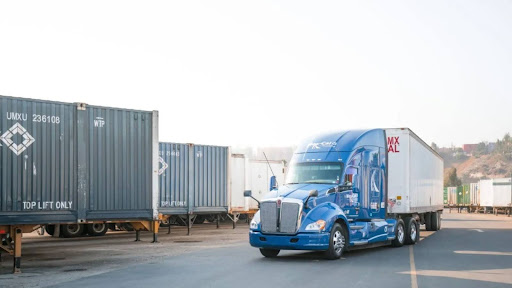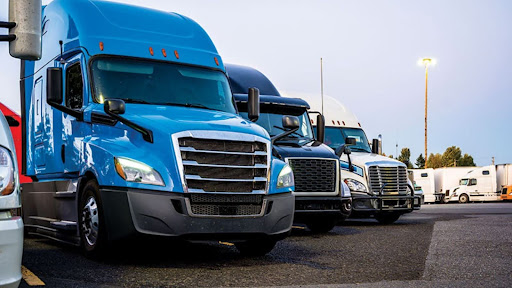Imagine knowing exactly where your truck is, how it’s doing, and when it will reach its stop — all without making a single phone call. Sounds like magic? It’s not. That’s what GPS and telematics do for truck transport. They help track and manage trucks in real time, making things smoother, safer, and more cost-effective.
In today’s world, where every mile and minute counts, GPS and telematics are changing the way trucks move. These smart tools help drivers avoid traffic, stay safe, save fuel, and keep deliveries on time. It’s like having a co-pilot and a mechanic on board—without ever needing to stop.
What is GPS and Telematics in Trucking?
When it comes to transport by truck, GPS and telematics are two powerful tools that help keep everything running smoothly. But what exactly are they, and why do they matter so much for trucking? In simple terms, these technologies track vehicle location, monitor performance, and improve communication—making freight delivery safer, faster, and more efficient.
Understanding GPS in Trucking
GPS stands for Global Positioning System. It’s a technology that uses satellites to find the exact location of a truck anywhere in the world. Think of GPS like a digital map in the sky that tells you where your truck is in real time. For trucking, this means managers and drivers can see exactly where the truck is at any moment. This helps avoid getting lost, saves time, and improves delivery schedules.
What is Telematics?
Telematics is a bit broader than GPS. It’s a system that collects and shares important information from the truck beyond just its location. This can include how fast the truck is going, how much fuel it’s using, and even the engine’s health. Imagine telematics as the truck’s own “health monitor” and “driver assistant,” constantly sending updates to keep things running right.
How GPS and Telematics Work Together
When combined, GPS and telematics create a powerful system for truck monitoring. GPS shows where the truck is, while telematics tells you how the truck is performing. This allows trucking companies to plan better routes, save on fuel, and fix problems before they turn into big issues. It also helps keep drivers safe by tracking driving habits like speed and braking.
How GPS Helps with Route Tracking and Safety

Using GPS in truck transport is a game-changer, especially when it comes to tracking routes and keeping drivers safe. It’s more than just knowing where a truck is—it’s about making the whole journey smarter and safer.
Real-Time Route Tracking
GPS allows trucking companies and drivers to see exactly where the truck is at any moment. This means they can track the truck’s progress along its route in real time. If there’s a traffic jam, road closure, or accident ahead, GPS systems can quickly suggest alternate routes.
This helps drivers avoid delays and reach their destinations faster. It’s like having a personal guide on the road, always showing the best path forward.
Enhancing Safety on the Road
Safety is a top priority in trucking, and GPS helps by providing constant updates about the truck’s location. This means if a truck goes off its planned route or stops unexpectedly, managers know right away and can check in with the driver. GPS can also be linked to systems that monitor speed and harsh braking. This helps encourage safer driving habits and reduce accidents.
Avoiding Lost Time and Fuel Waste
By guiding drivers on the fastest, safest routes, GPS cuts down on wasted time and fuel. Getting stuck in traffic or taking a wrong turn can cost a lot, but GPS helps prevent that. When trucks use GPS for route tracking, deliveries arrive on time, customers stay happy, and the trucking company saves money.
Telematics Improves Maintenance and Fuel Efficiency
Telematics in truck transport plays a big role in keeping trucks in good shape and saving fuel. It’s like having a smart helper that watches over the truck’s health and how it’s being driven, helping avoid costly repairs and wasted fuel.
Keeping Trucks Healthy with Telematics
Telematics systems collect data from the truck’s engine and other parts. This means they can spot problems early, like if the engine is overheating or if brakes need attention. Instead of waiting for something to break down on the road, truck managers get alerts so they can fix issues right away. This reduces unexpected breakdowns and keeps trucks on the road longer.
Saving Fuel and Cutting Costs
Fuel is one of the biggest expenses in trucking. Telematics helps by tracking how the truck is driven, including speed, idling time, and sudden stops. When drivers speed or let the engine idle too long, it wastes fuel. With telematics, companies can spot these habits and coach drivers to be more fuel-efficient. This not only saves money but also helps reduce pollution.
Smarter Maintenance Scheduling
Telematics also helps schedule maintenance at the right time. Instead of waiting for a set number of miles, trucks get checked based on how they’re actually used. This means repairs happen when needed, not too early or too late, keeping trucks running smoothly without wasting time or money.
Better Communication and Planning with Telematics Systems
In truck transport, telematics systems are a powerful tool that improves communication and helps with smarter planning. These systems connect drivers, trucks, and managers in real time, making every trip easier to manage.
Easy and Fast Communication
Telematics lets managers send messages directly to drivers without the need for phone calls. If there’s a change in delivery times or a new route to follow, drivers get updates right away. This quick communication reduces confusion and keeps everyone on the same page, helping deliveries run smoothly.
Better Planning and Scheduling
Because telematics tracks trucks in real time, managers know exactly when a truck will arrive at its destination. This makes it easier to plan loading, unloading, and other jobs. If a truck is running late, the team can adjust plans quickly and inform customers, avoiding surprises.
Improving Customer Service
When companies use telematics, they can give customers accurate delivery times and updates. Customers feel more confident knowing where their shipments are and when to expect them. This builds trust and improves overall satisfaction.
Teamwork Made Simple
With telematics, drivers and managers work better together. Drivers get the support they need on the road, and managers have the information to solve problems before they become bigger issues. This teamwork keeps operations running smoothly and reduces stress for everyone involved.
Conclusion
Using GPS and telematics makes truck transport smarter and easier. It keeps drivers safe, saves money, and helps everyone stay on track. Whether managing one truck or a fleet, these tools give better control and peace of mind. Start using them today to move faster and smarter on every journey.






